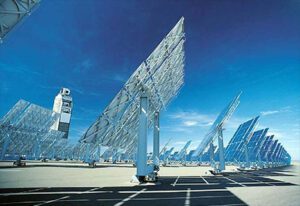How to power the united states using only clean energy

The United States is the world’s second-largest emitter of greenhouse gases, and it is clear that we need to transition to a clean energy economy. There are a number of ways to power the United States using only clean energy, and here are some of the most promising options:
- Solar power: Solar power is one of the most promising clean energy sources. The United States has a lot of solar potential, and solar power is becoming increasingly affordable.
- Wind power: Wind power is another promising clean energy source. The United States has a lot of wind potential, and wind power is also becoming increasingly affordable.
- Hydropower: Hydropower is a clean energy source that has been used for centuries. The United States has a lot of hydropower potential, but it is important to use this resource sustainably
- Geothermal power: Geothermal power is a clean energy source that uses the heat from the Earth’s interior to generate electricity. The United States has a lot of geothermal potential, but this resource is not yet widely used.
- Nuclear power: Nuclear power is a clean energy source that does not produce greenhouse gases. However, nuclear power is also controversial, and there are concerns about the safety of nuclear power plants.
In addition to these individual sources of clean energy, there are also a number of emerging technologies that could help us to power the United States using only clean energy. These technologies include:
- Energy storage: Energy storage is essential for a clean energy grid. It allows us to store excess energy from solar and wind power and then use it when it is needed.
- Smart grids: Smart grids are power grids that use digital technology to improve efficiency and reliability. Smart grids can help us to integrate more renewable energy onto the grid.
- Demand response: Demand response is a way to reduce electricity demand during peak times. This can be done by offering incentives to consumers to reduce their electricity use during these times.
The transition to a clean energy economy will require a significant investment, but it is an investment that is worth making. Clean energy is the key to a healthier planet and a more sustainable future.
Here are some of the benefits of powering the United States using only clean energy:
- It would reduce greenhouse gas emissions and help to mitigate climate change.
- It would improve air quality and create a healthier environment.
- It would create jobs in the clean energy sector.
- It would make the United States more energy independent.
The transition to a clean energy economy is a complex challenge, but it is one that we must meet. With the right policies and investments, we can power the United States using only clean energy and create a better future for all.

